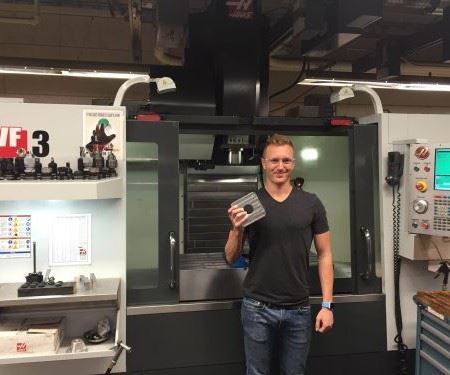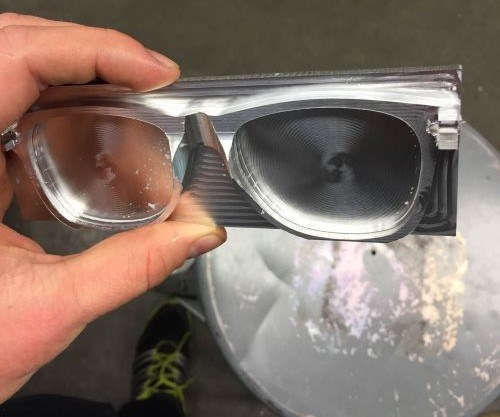Machining Is Its Own Outreach, Says Young Engineer
Modern CNC machining technology is so distinct from other manufacturing operations that it will attract and draw in the people best able to fill the machining-related positions of the future.
Employers and industry groups have struggled with the question of how best to reach out to young people who might fill the so-called “skills gap” in manufacturing, and fill the need for talent in CNC machining in particular. Dakota Bass thinks this last part of the question answers itself. For him, machining was the outreach. He became fascinated with machining the first time he had a chance to make a machined component as part of his mechanical engineering coursework at California Polytechnic State University. He bought his own small CNC machine and began to experiment with machining in his own time.
He has worked with or near CNC machine tools at each stop in his career since, which so far has involved manufacturing positions with Apple and CubeSat. He recently accepted a position with SpaceX and will begin working there soon.
“Among younger people who are looking at manufacturing, I think the ones who can fill the opportunities in machining will be self-selecting,” he says. Modern CNC machining is fast, automated, and amenable to innovation in a way that is not quite like any other manufacturing process. If continued automation of machining processes leads to an industry in need of fewer employees, but demanding high engagement from the employees who do oversee the work of machining, then it wouldn’t be hard to imagine the work being carried out by a corps of self-selected enthusiasts like Mr. Bass.
In fact, I first heard from him because of an idea that developed from his enthusiasm. Ballnose tools are not the only end mills than can do 3D surface milling, he realized. Recently, he has been experimenting with using much larger, flat-bottom tools to machine smooth, curving surfaces. The key to using the square tools in this way is small stepover increments, he says. The nose rest of the sunglass form below was machined with a 3-inch-diameter face mill—and he says it was machined faster than a ballnose tool could have produced the same form.
One of the challenges to this approach is that the programmer has to draw the spline defining the tool path for this cutter, because CAM systems don’t automatically generate contouring routines using a tool such as this. Partly for this reason, the technique so far remains his own thought experiment and has yet to find a production application. Even so, you can download the paper Mr. Bass wrote about surfacing with a flat-bottom tool.
Related Content
-
6 Tips for Training on a Swiss-Type Lathe
There are nuances to training a person to effectively operate a Swiss-type lathe. Derek Korn, Production Machining’s editor in chief, shares suggestions from a CNC machine shop.
-
All-Around Mill Improves Productivity and Cost for Valve Job
Adopting a mill with a double-negative rake and pockets compatible with multiple insert geometries enabled Progressive Metal Service to increase feed and lower scrap rates for a valve.
-
Same Headcount, Double the Sales: Successful Job Shop Automation
Doubling sales requires more than just robots. Pro Products’ staff works in tandem with robots, performing inspection and other value-added activities.

.jpg;width=70;height=70;mode=crop)
















